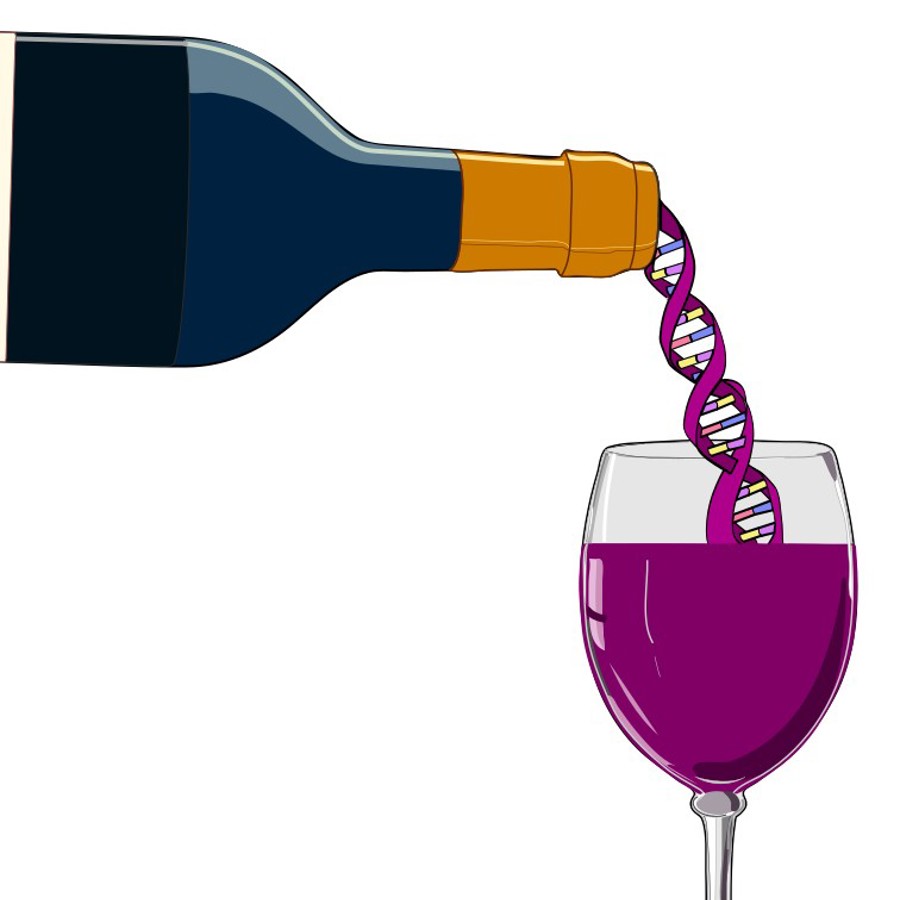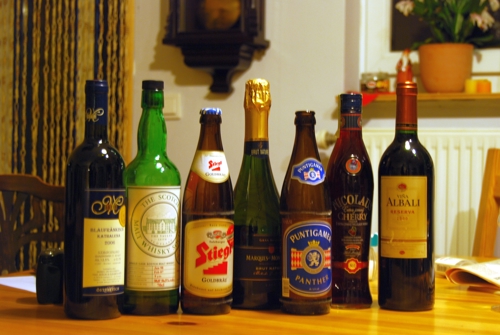
Should there be genetic testing for alcohol flushing?
January 4, 2011

- Related Topics:
- Cancer,
- Medical genetics,
- Personalized medicine
A curious adult from Minnesota asks:
"It looks like current evidence points to a link between blushing from alcohol and increased risk for esophageal cancer. Do you think it is important to have a genetic test for the gene responsible and make the general public aware the risk?"
I think it is definitely important that we make the public aware of this risk. But there probably doesn't need to be a genetic test. People who blush/flush when they drink alcohol know who they are.
What they might not know about is their higher risk for esophageal cancer. Or that there is no increased risk if they don't drink any alcohol.
The DNA difference that causes them to flush is only a problem when they drink. No alcohol means no increased risk of esophageal cancer.
And the flushers aren't the only ones who need to be warned. Anyone who drinks a lot of alcohol is at a higher risk for esophageal cancer. Flushing from alcohol increases that risk even more.

There are some pretty scary statistics out there. For example, if you don't flush but are a heavy drinker, you are 5 times more likely to end up with esophageal cancer compared to someone that doesn't drink.1 For flushers this goes up to 7 times more likely!2 Of course these statistics do vary a bit from study to study. But in every study your risk of having esophageal cancer increases if you drink.
This increased risk comes from something called acetaldehyde. This dangerous chemical is made in the process of breaking down alcohol. It damages DNA and causes cancer.
People who flush have trouble clearing out this acetaldehyde because of a small DNA difference in their ALDH2 gene. The chemical stays around longer, increasing the chances their DNA will be damaged. And also increasing their risk of esophageal cancer.
Breaking Down Alcohol is Risky Business
Alcohol, as a chemical, is toxic. So your body breaks it down to acetate which is safer.
But during that process, acetaldehyde is made. And this is REALLY BAD stuff!
Acetaldehyde likes to stick to your DNA, which causes all sorts of problems. It can break your DNA and make it harder for your cells to fix that broken DNA. These sorts of problems can lead to cancer.
That's why alcohol can increase everyone's risk for cancer. The more you drink, the more bad stuff hanging out in your body.
And people who flush are at a higher risk because they have trouble turning acetaldehyde to acetic acid. This means they have an even bigger build up of this nasty chemical. Their trouble comes from a small glitch in their DNA.
Alcohol Breakdown is Controlled by your Genes
As you probably know, the instructions for making and running you are found in your DNA. A big part of these instructions is found in the genes there.
Each gene has the instructions for one small part of you. And these instructions are really important. When they aren't working right, things can go wrong.
The alcohol breakdown process is controlled by a few different genes. Some genes have the instructions for breaking alcohol down into acetaldehyde. Another set of genes controls turning acetaldehyde into acetic acid.
ALDH2 is one of the genes in charge of turning acetaldehyde into acetic acid. Some people have a small variation in that gene so that it barely works. Scientists call this version ALDH2*.

People with ALDH2* can't turn their acetaldehyde into acetic acid very well when they drink. So it just builds up. And it builds up worse in people with two copies of ALDH2*.
Remember, we have two copies of most of our genes -- one from each of our parents. This includes the ALDH2 gene. What this means is that it is possible to have three different combinations of this gene.

The majority of people have two copies of ALDH2 and have typical reactions to alcohol. They are at the usual risk for esophageal cancer. Your reaction and risk is very different though depending on whether you have one or two copies of the poorly working version of the gene, ALDH2*.
People with one copy of ALDH2* react to alcohol with slight nausea, a racing heartbeat and flushing. These reactions aren't usually bad enough to keep them from drinking. And they can deal with the symptoms in various ways (like taking antihistamines, for example).
This means they can drink alcohol without too much trouble. Their body is telling them in such a subtle way that alcohol is doing bad things to them that they can ignore their body's advice. Which is why they are at a higher risk for esophageal cancer.
But people with two copies of ALDH2* aren't usually at a higher risk because they can't tolerate much alcohol at all. They get so sick from the stuff that they rarely drink any of it at all. So they don't tend to have an increased risk for esophageal cancer.2
This is a gene where it is safer to have two non-working copies instead of being a carrier. But whether you have 1 or 2 copies of ALDH2* you should know that you are flushing for good reason. Your body is telling you to stay away from alcohol. And by avoiding alcohol (or at least limiting how much you drink), you also avoid the higher risk of esophageal cancer.

Author: Jan DeNofrio
When this answer was published in 2011, Jan was a postdoc in the Department of Genetics, studying the mechanisms involved in coral bleaching in John Pringle’s laboratory. Jan wrote this answer while participating in the Stanford at The Tech program.
 Skip Navigation
Skip Navigation

